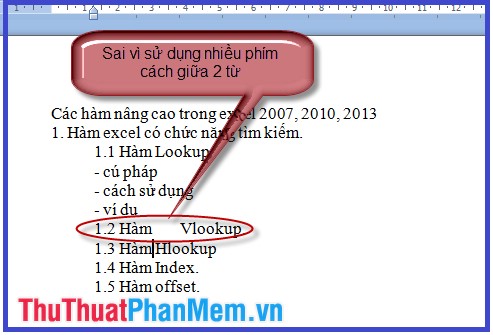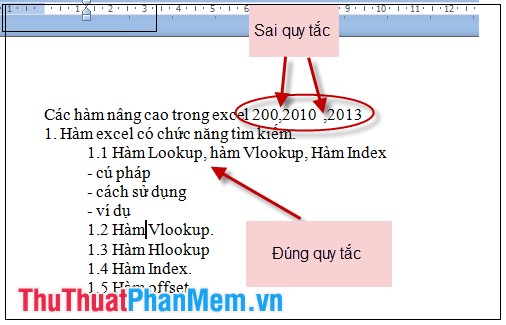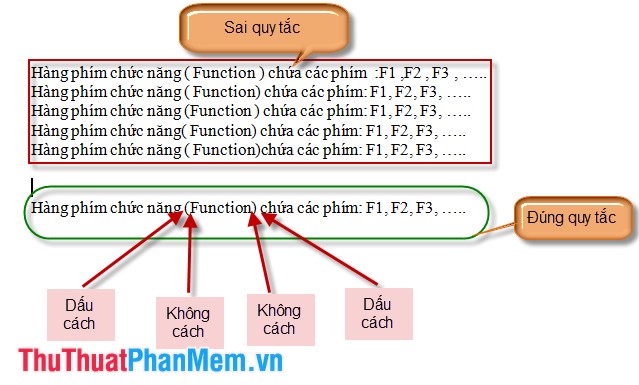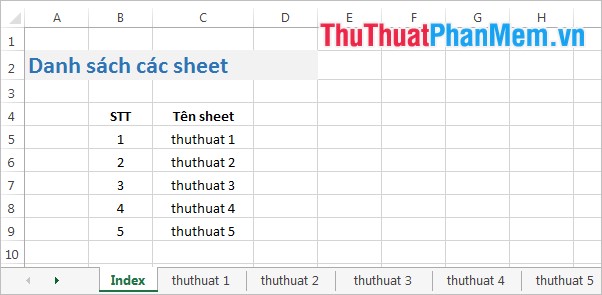Some basic rules when editing Word documents
In order for your text to be assessed as standard, good-looking and impress readers, you need to note some basic text editing rules as follows:
1. What is the difference between a character, a word, a sentence, a line, and a distance?
- Character (Character): All characters are on the keyboard and some characters are available in the software.
- Word (Word):
+ Many characters (other than whitespace characters) put together are called 1 word.
+ The words are separated by spaces (space or space).
- Sentence (Sentence):
+ Many words combine to form sentences.
+ Sentences are separated by periods (.).
- Paragraph:
+ Many sentences (with related content) forming a paragraph.
+ When you want to write another paragraph use the Enter key to create a new line.
2. Note the Word line breaks: You should pay attention when writing to the end of the line, the computer will automatically break down the line without using the Enter key .
3. Some basic typing rules.
Do not use the Enter key to create a new line
- You should not use the Enter key to control the line breaks because Word automatically breaks the line. If you use the Enter key to go down the line, the computer will understand you into a new paragraph. The Enter key is used to identify two paragraphs together.
Between two words, use only 1 space (Space)
- Because Word automatically adjusts the distance between words. If you use too much space between 2 words, Wodd will implicitly understand that the space is 1 word and will divide that space and words. So the spacing between words changes and your text doesn't look evenly and scientifically. For example, the picture:

Rule for punctuation marks
- Punctuation marks include: periods, commas, semicolons, exclamation points, question marks.
- When writing these punctuation marks you note it will be written closely from the front of it and followed by spaces.
- Why must write according to this principle: In case of punctuation at the end of a line of Word, if the line is not written in front of the word, it will be understood as 1 word and will break down the line. Thus it is not in accordance with the rules of writing these marks. Picture depicting:

Rules for opening quotes, closing quotes and single quotes
- The opening and closing quotes must be written closely to the last character to the right of this mark.
- The closing and closing brackets must be written closely to the last character on the left of this sign. Illustration:

Some of the above drafting rules hope to help you a lot. Good luck!
You should read it
- Word 2013 Complete Tutorial (Part 9): Use Line and Paragraph Spacing
- MS Word - Lesson 4: Editing a Word document
- Word 2013 Complete Guide (Part 8): Using Indents and Tabs
- Do not allow copying, editing in Word
- Word 2013 Complete Guide (Part 11): How to create hyperlink links
- The text editing operations on Word 2013 are basic
- Word 2013 Complete Guide (Part 10): Bullets, Numbering, Multilevel list in Microsoft Word
- How to align beautiful Word documents
May be interested
- Common math functions in Excel
 summary of common calculation functions in excel for accountants.
summary of common calculation functions in excel for accountants. - Common statistical functions in Excel
 summary of common statistical functions in excel
summary of common statistical functions in excel - Create a table of contents for a list of worksheets in Excel
 your excel spreadsheet has many sheets, you want to manage them in the most scientific way so they can quickly open when needed. to manage the sheets quickly and easily, you need to create a table of contents of the list of sheets in the excel file.
your excel spreadsheet has many sheets, you want to manage them in the most scientific way so they can quickly open when needed. to manage the sheets quickly and easily, you need to create a table of contents of the list of sheets in the excel file. - Sumif and Sumifs functions in Excel
 sumif function - the function to sum using a condition. sumifs function - sum function uses multiple conditions
sumif function - the function to sum using a condition. sumifs function - sum function uses multiple conditions - Beautiful PowerPoint wallpapers 2015
 you can change the powerpoint background image to make the presentation more beautiful and attractive. the following article summarizes over 100 beautiful 2015 powerpoint backgrounds you can choose to use.
you can change the powerpoint background image to make the presentation more beautiful and attractive. the following article summarizes over 100 beautiful 2015 powerpoint backgrounds you can choose to use. - Create beautiful photo effects in PowerPoint
 powerpoint gives you lots of cool features to make your presentation more alive. one of them is the feature to create beautiful photo effects to help your images move diverse, avoid boring.
powerpoint gives you lots of cool features to make your presentation more alive. one of them is the feature to create beautiful photo effects to help your images move diverse, avoid boring.






 How to edit basic Word documents for beginners
How to edit basic Word documents for beginners Word 2013 Complete Guide (Part 7): Text printing operations
Word 2013 Complete Guide (Part 7): Text printing operations Word 2013 Complete Tutorial (Part 9): Use Line and Paragraph Spacing
Word 2013 Complete Tutorial (Part 9): Use Line and Paragraph Spacing MS Word - Lesson 4: Editing a Word document
MS Word - Lesson 4: Editing a Word document Word 2013 Complete Guide (Part 8): Using Indents and Tabs
Word 2013 Complete Guide (Part 8): Using Indents and Tabs